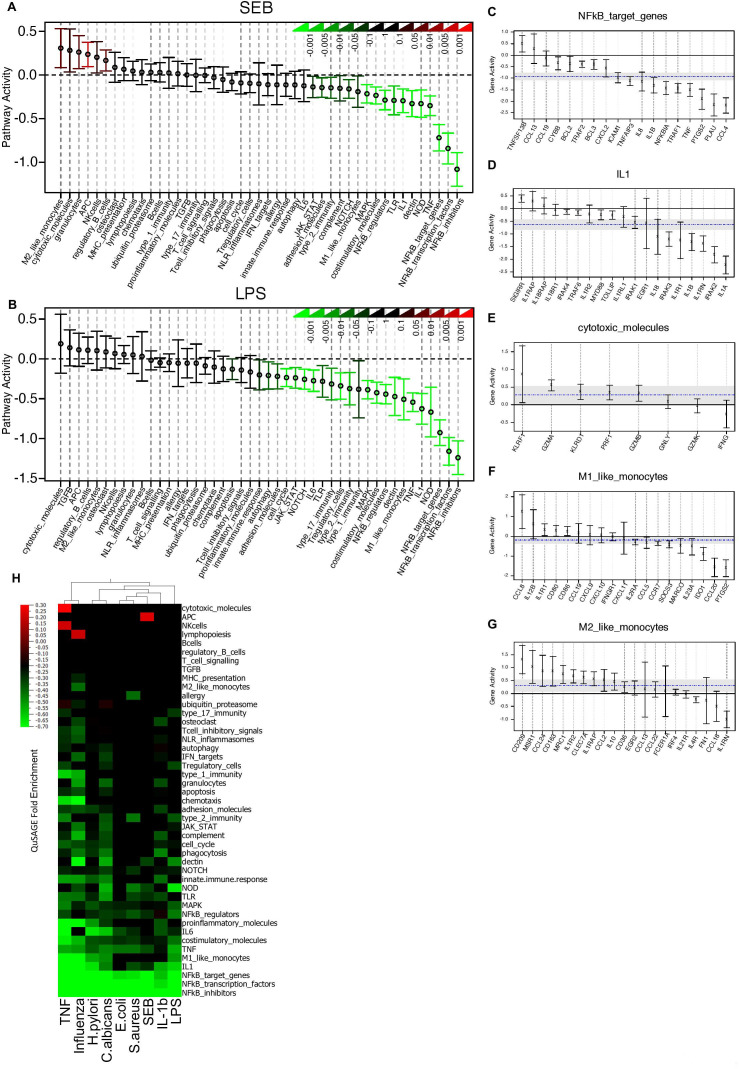Figure 3.
Modular transcriptional repertoire analysis reveals multiple mechanisms of tumour necrosis factor (TNF)-blocker action in spondyloarthritis (SpA). (A, B) Effect of anti-TNF therapy on the activity of 45 gene modules (online supplemental table 5) generated from 456 immune-related genes. Whole-blood cultures were stimulated with SEB (A) or LPS (B). For each gene module, the mean activity fold change and 95% CI are plotted and colour coded according to their FDR-corrected p values (means compared with fold-change zero). CIs overlapping the horizontal dotted line indicate statistically significant increased or decreased module activity at D7 as compared with D0. (C–G) Detailed gene activity in five representative modules with decreased (C, D, E, LPS stimulation) or increased (F, G, SEB stimulation) pathway activity after anti-TNF therapy. The cultures were stimulated with LPS and SEB, respectively. Represented are the mean fold change and 95% CI for individual genes in each module. The horizontal dashed blue line and the grey band indicate the mean differential expression of all genes in the module at D7 versus D0, and the 95% CI. (H) QuSAGE fold enrichment of gene set activity in nine different stimulated cultures at D7 versus D0. For each module, the mean fold change is color coded to indicate increased (red) or decreased (green) module activity. Only changes reaching a significance threshold of FDR≤0.01 are represented. IFN, interferon; IL, interleukin.

